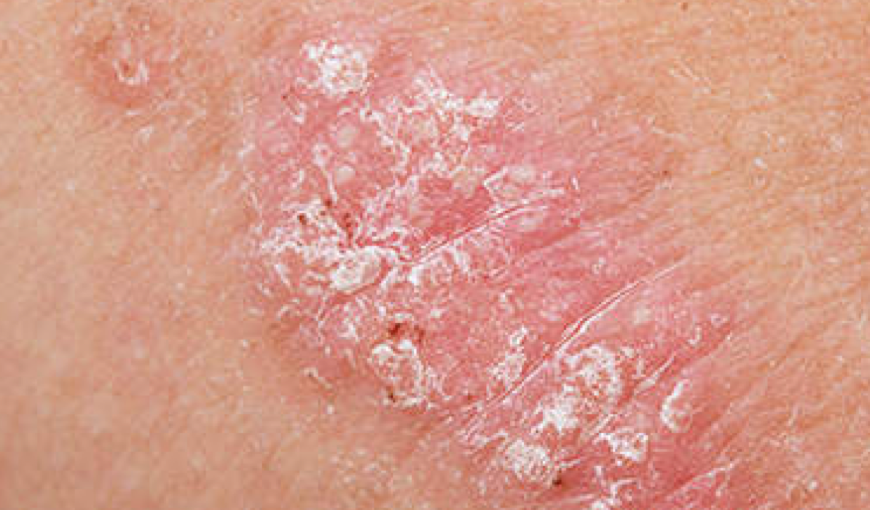PSORIASIS

What is Psoriasis?
Psoriasis is a chronic skin disorder that is commonly characterized by sharply marginated red, scaly plaques or papules that have an overlying silver scale. However, there are several other clinical presentations. The lesions can occur anywhere on the body, however there are several sites where lesions are commonly found including: elbows, knees, sacralgluteal region, scalp, palms and soles. Psoriasis is typically not severe enough to affect general health and the condition is typically managed in an outpatient clinical setting.
How common is Psoriasis? And who is at risk?
The worldwide prevalence of psoriasis ranges from .6 to 4.8%. Men and women are equally affected and the condition affects all races. Psoriasis can present at any age but there tends to be two peaks in the age of onset. One between the ages 20 and 30 and another between 50 and 60. Several risk factors have been identified including heredity, environmental factors such as bacterial infection, trauma, or drug reactions.
What is the treatment for Psoriasis?
Psoriasis is a frustrating disorder for the patient and they can feel quite miserable as the silvery scale produces flakes and the lesions can be overall bothersome. It is important for the patient to understand that the goal of treatment is to control the disorder, as there is no cure. Treatment for psoriasis is tailored to each individual patient but as a general rule the treatment consists of either topical or systemic therapy. Depending on the severity of the disorder topical treatments can include: topical corticosteroids, emollients, retinoids, topical tacrolimus or pimecrolimus, and localized phototherapy is often an option for recurring disease. Systemic therapies include drugs like methotrexate, retinoids, cyclosporine, and biologic immune modifying agents such as alefacept and infliximab.


